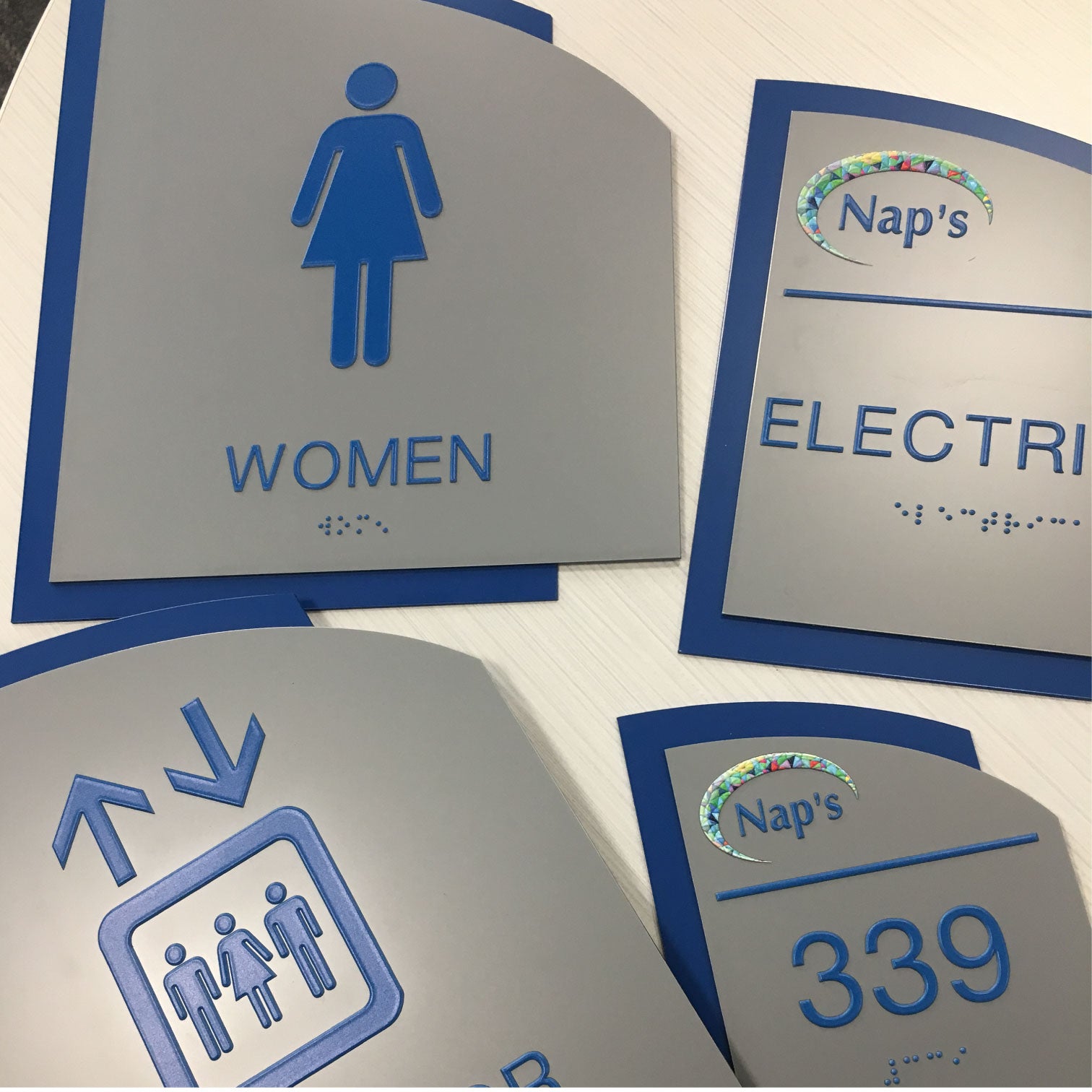Check out the Importance of ADA Signs in Public Spaces
Wiki Article
Checking Out the Key Attributes of ADA Signs for Boosted Ease Of Access
In the realm of ease of access, ADA indications function as silent yet powerful allies, ensuring that rooms are accessible and comprehensive for people with handicaps. By integrating Braille and tactile components, these indicators damage obstacles for the aesthetically impaired, while high-contrast shade plans and readable font styles satisfy diverse visual demands. Their tactical positioning is not approximate but instead a computed effort to assist in smooth navigating. Yet, beyond these attributes exists a much deeper narrative regarding the development of inclusivity and the ongoing dedication to creating equitable spaces. What a lot more could these signs indicate in our quest of global availability?Relevance of ADA Conformity
Making certain conformity with the Americans with Disabilities Act (ADA) is crucial for cultivating inclusivity and equal gain access to in public rooms and workplaces. The ADA, enacted in 1990, mandates that all public centers, employers, and transportation services accommodate people with disabilities, ensuring they appreciate the same legal rights and possibilities as others. Conformity with ADA standards not just fulfills legal commitments but likewise improves a company's reputation by showing its dedication to diversity and inclusivity.One of the key aspects of ADA conformity is the implementation of available signage. ADA signs are designed to ensure that people with specials needs can conveniently browse with rooms and structures.
Furthermore, adhering to ADA laws can alleviate the danger of possible fines and lawful repercussions. Organizations that fall short to follow ADA guidelines may deal with suits or penalties, which can be both monetarily difficult and harmful to their public picture. Thus, ADA conformity is essential to promoting an equitable environment for everybody.
Braille and Tactile Aspects
The consolidation of Braille and tactile elements right into ADA signs embodies the principles of access and inclusivity. It is usually positioned under the corresponding text on signs to make certain that people can access the details without visual support.Tactile elements expand past Braille and include elevated characters and symbols. These elements are created to be discernible by touch, permitting individuals to identify room numbers, restrooms, departures, and other crucial areas. The ADA sets certain guidelines relating to the size, spacing, and positioning of these tactile components to enhance readability and ensure consistency across different environments.

High-Contrast Color Pattern
High-contrast color design play an essential duty in boosting the presence and readability of ADA signage for people with visual problems. These schemes are important as they maximize the difference in light reflectance in between message and history, making certain that indications are conveniently noticeable, even from a range. The Americans with Disabilities Act (ADA) mandates using certain shade contrasts to accommodate those with minimal vision, making it a critical aspect of conformity.The efficiency of high-contrast shades lies in their capacity to stick out in various lighting conditions, including poorly lit environments and locations with glare. Typically, dark message on a light history or light text on a dark history is used to accomplish ideal comparison. For instance, black text on a yellow or white background gives a plain aesthetic difference that aids in fast recognition and comprehension.

Legible Fonts and Text Dimension
When taking into consideration the layout of ADA look these up signs, the option of readable fonts and suitable text dimension can not be overemphasized. The Americans with Disabilities Act (ADA) mandates that font styles have to be sans-serif and not italic, oblique, script, very attractive, or of uncommon type.The size of the message additionally plays a crucial function in ease of access. According to ADA guidelines, the minimal text height should be 5/8 inch, and it needs to boost proportionally with checking out distance. This is particularly essential in public spaces where signage demands to be reviewed rapidly and accurately. Consistency in text size adds to a cohesive visual experience, helping people in navigating environments successfully.
In addition, spacing in between lines and letters is indispensable to legibility. Ample spacing stops personalities from appearing crowded, boosting readability. By adhering to these standards, designers can considerably boost availability, making sure that signage offers its intended function for all individuals, despite their aesthetic capacities.
Effective Placement Methods
Strategic positioning of ADA signs is necessary for maximizing accessibility and guaranteeing compliance with legal criteria. ADA standards specify that indications ought to be mounted at a height in between 48 to 60 inches from the ground to guarantee they are within the line of sight for both standing and seated individuals.Additionally, signs must be positioned surrounding to the lock side of doors to enable easy identification before entrance. This positioning helps go right here individuals situate spaces and spaces without blockage. In instances where there is no door, indicators ought to be situated on the local nearby wall. Consistency in indicator positioning throughout a center improves predictability, decreasing confusion and boosting overall customer experience.

Verdict
ADA indicators play a crucial role in promoting access by integrating functions that resolve the demands of people with handicaps. These components jointly cultivate a comprehensive environment, underscoring the importance of ADA conformity in making certain equivalent accessibility for all.In the world of accessibility, ADA indicators serve as quiet yet powerful allies, guaranteeing that areas are navigable and inclusive for people with handicaps. The ADA, established in 1990, mandates that all public facilities, employers, and transportation solutions fit individuals with specials needs, ensuring they enjoy the exact same legal rights and chances as others. ADA Signs. ADA signs are created to guarantee that individuals with impairments can easily browse through areas and buildings. ADA standards stipulate that indicators need to be placed at an elevation in between 48 to 60 inches from the ground to ensure they are within the line of sight for both standing and seated people.ADA indicators play an important duty in advertising accessibility by incorporating functions that attend to the needs of people with impairments
Report this wiki page